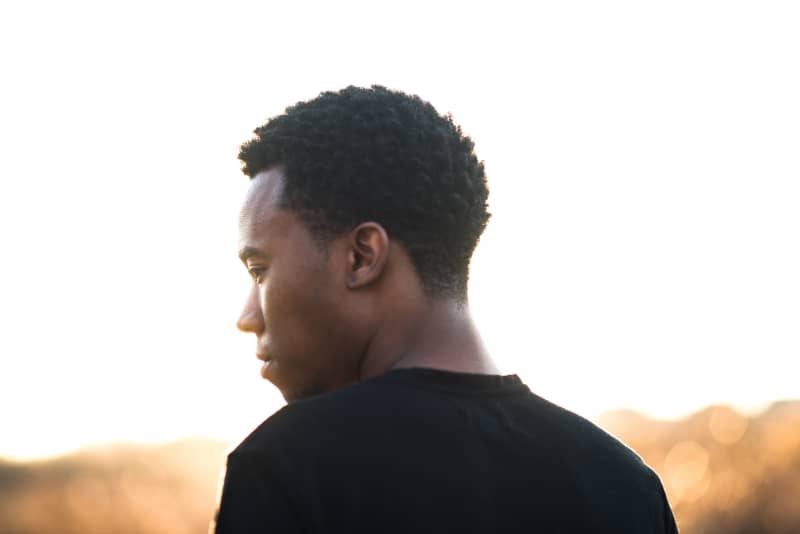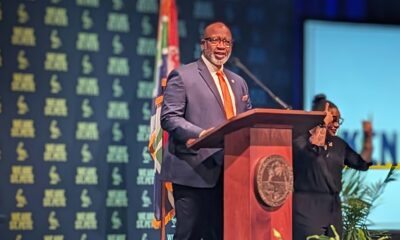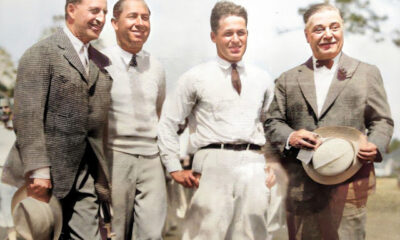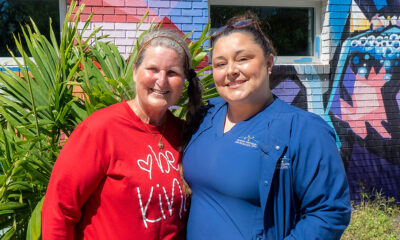Comm Voice
Community Voices: Gun violence – a new approach is needed

Welcome to the Catalyst’s Community Voices platform. We’ve curated community leaders and thinkers from all parts of our great city to speak on issues that affect us all. Visit our Community Voices page for more details.
Last month, 17-year-old Christopher Tonsel was shot by a St. Petersburg police officer after fleeing on foot from a domestic dispute at Wildwood Park. K-9 officer Leighton Williams was in the 2400 block of 13th Avenue South, when he stepped out of his cruiser to try to locate Tonsel, who was seen running between two residences in an attempt to hide.
According to Sheriff Bob Gualtieri, Officer Williams and his K-9 pursued Tonsel, who allegedly had a revolver in his waistband. Officer Williams said that despite his verbal requests for Tonsel to drop the firearm, Tonsel reached for it. Officer Williams fired one shot at Tonsel, striking him in the torso, according to the sheriff. The teen was immediately rushed to the hospital for emergency surgery.
Less than two weeks later, a man was killed and four other were injured during a shooting at the Skyway Plaza where a “neighborhood boxing league” event was taking place. The event, which was not properly permitted or secured, was meant to address gun violence in the community.
These shootings are part of a bigger issue. While the city of St. Petersburg has seen a significant rise in gun violence this year, it is not alone. Experts predict that the United States will experience the highest spike in gun homicides in decades, based on statistics from the Federal Bureau of Investigation’s gun violence archive. Anti-gun violence prevention measures must foster intentional healing spaces to stop the proliferation of illegal guns and firearm fatalities.
Intentional healing spaces are virtual, social and physical communities that encourage healthy and vibrant lifestyles. They’re intended to help those most impacted by racial and other forms of oppression by cultivating individual and community-transfiguration, while also addressing the root causes of inequalities and injustices.
Poverty, income inequality, delipidated public housing, deficient public services, underperforming schools, despair about the future, and easy access to weapons are all fundamental causes of gun violence, according to the non-profit Educational Fund to Stop Gun Violence. A multi-faceted situation necessitates and merits a multi-faceted solution.
Creating intentional healing spaces is that multi-faceted solution. It enables a more holistic approach to both the systemic causes of gun violence and the ensuing invisible wounds, such as the collective trauma that people, families and communities feel as a result of gun violence exposure.
Intentional healing spaces can be part of a broader framework to bigger efforts to strengthen the workforce. As we all know, providing jobs for teenagers is a must if we want to reduce gun violence. For example, in Chicago, youth who engaged in a summer work program run by local community organizations saw a 43% reduction in violent crime arrests (including gun violence).
Improvements and repairs to a neighborhood’s basic infrastructure can help to build community cohesiveness and minimize violent crime. Increased street lighting, for example, has regularly been found to reduce violence.
Creating intentional healing spaces in Midtown — one of the areas with the highest rates of violent crime — is essential to St. Petersburg’s anti-gun violence efforts. Residents in this predominantly African American community persistently advocate for public safety, grocery stores, functioning sewage systems et cetera.
We need to listen to communities about what they think will work; after all, they’re the experts on the happenings in their neighborhoods. And healing spaces is what they want.
I learned this last week, after when I hosted a community conversation about gun violence and the trauma it inflicts on those most affected. For two hours, a panel led by Chief Anthony Holloway, a licensed clinical social worker, an ex-offender and three parents who have lost children to gun violence, dialogued and identified innovative solutions to curbing the gun epidemic that has found its way into our community. As part of these efforts, we committed to mentoring more youth in neighborhoods with the highest rates of shots fired and providing these young people with more productive afterschool care activities, free of charge.
The youth who participated in the conversation relayed positive stories of good times they had in other neighborhoods in which they lived or visited, while also remarking on how upsetting it was to see the overgrown lawns, litter, lack of opportunities and such where they resided.
They desired clean neighborhoods, a large-scale job apprenticeship program and innovative teen-focused community recreation centers.
These responses from our youth helped me realize that what the city of St. Petersburg needed most was a task force designed specifically for addressing the effects of gun violence. There is a drug task force and a human trafficking task force, but what proactive measures have we made to help reducing gun violence in St. Pete?
In predominantly Black, lower-income neighborhoods, intentional healing spaces recreate the environment — including infrastructure upgrades and new affordable housing developments — restore safety and rejuvenate communities through youth programs throughout the city, as well as provide virtual and physical spaces that reinforce unity in the community and promote mental health.
Intentional healing spaces provide benefits beyond decreasing gun violence, which disproportionately affect African-Americans, who are 10 times more likely than Caucasians to die from a bullet.
Everytown for Gun Safety recently released a policy report that details the several ways in which gun violence affects African American adolescents and communities, including heightened anxiety, grief, depression, trauma, and unraveled community camaraderie and cohesiveness. That is why St. Petersburg needs policies and programs tailored to specifically address healing from trauma, because what we have learned is that the violence indirectly affects our entire city. Families, business owners and property values are all affected by this epidemic.
Multiple intervention techniques are needed that focus on the various fundamental causes rather than the symptoms, as intentional healing spaces do. These virtual, social and physical safe spaces will not appear overnight; this will require a long-term approach and full community support.
However, there are far too many young people who are waiting for our local leaders to take action to save their lives. We cannot afford to wait. Now is the time for bold, all-encompassing endeavors.








Rose Hayes
November 17, 2021at7:23 pm
Sunday night November 15, 2021, young man was shot. Allegedly his injury was not life threatening, however he later died at the hospital. I understand this was a totally unnecessary action taken. This young man should not have been shot. We have not heard/seen the ‘perps’ story as to why he shot the young man. Why Guns????Why so angry that you use a gun and take a life???